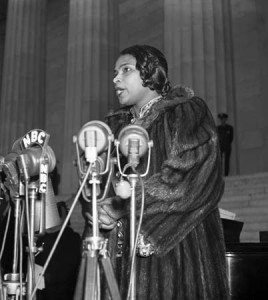We once had a dog named Naomi. She adopted Mary at a spring women’s retreat, sponsored by 7th & James Baptist Church. The retreat was held at a rural center near Clifton, perhaps 20 years or so ago. As the godly women of 7th approached the door, they saw a little female with a new litter. Most of the puppies cowered under some broken machinery, save for one, a small black and white dog. She romped out and played among their feet. She was a mutt, a mix of terrier and beagle, with perhaps some mutt/lab blood. And Mary, who is full-blood WASP and DAR, had been wanting a dog, fell in love.
Since the retreat was on the Biblical story of Naomi and Ruth, Mary named the pup Naomi.
When the retreat ended the following day, Mary called and informed me that WE had a new puppy.
My role in this significant turn of events was to say “Yes, dear.” Which, I did.
And that’s how Naomi ended up at 118 North 30th Street.
Mary was working at McLennan Community College in those days, and I was freelancing, editing The Wittenburg Door, writing a weekly column for Billboard Magazine, and teaching a class or two in the Professional Writing department at Baylor. Naomi spent the late spring and summer tormenting my shoelaces – while I tried to write – and generally behaving like an adorable puppy.
Mary quickly trained Naomi to do her doggy business outside.
In fact, Naomi learned everything very quickly. While I’d grown up with dogs, I’d never had one as smart as Naomi, though the black mutt Jay-Jay (also called Bosco by my brother Steve) was a close second. Naomi learned dozens of tricks in short order. In addition to the standard “sit and shake” tricks, one of our favorites was to place a treat on her nose, then leave the room saying, “Stay, stay, stay …”. When we’d decided she’d been tortured enough, even if we were several rooms away, we’d say, “OK.” At that point, Naomi would flip the treat in the air with her nose and catch it in her mouth.
Another popular trick was a variation of the “play dead” routine. I’d say something like, “Naomi, think carefully. Would you rather be a living Republican or a DEAD Democrat?” At which point Naomi would hurl herself on the floor, roll over on her back, and freeze – a perfect imitation of a dead log. Depending on who was present, another variation was, “Naomi, would you rather be a live Texas Aggie or a DEAD Baylor Bear?”
Since Naomi didn’t speak (save for a certain whine/yawn that sounded suspiciously like “I want out,” Mary and I had to take turns vocalizing for her. We assumed that she was humiliated by having to perform for treats and thought unkindly for us the indignity of it all. In time, her (imagined) protestations became increasingly vulgar. Yes, Naomi had a foul mouth. We imagined a Dog Heaven where Mary and I were forced to perform demeaning tricks for our food, while Naomi glowered maniacally nearby. But perhaps that says more about us than Naomi.
In those days, Mary and I walked the Castle Heights neighborhood, where we lived, nearly every evening. Naomi, of course, would accompany us. In the first few years, we took her on a leash. Later, we got rid of the leash. Naomi led us, following the exact same route, rarely getting more than a house or two ahead and occasionally looking back to make sure we were keeping up.
Like most dogs, especially those with some terrier in them, Naomi loved to chase squirrels. She only caught one once, in park that bordered the small creek that flows between Karem Park and Castle Heights. It was a crippled little squirrel and it limped frantically for the nearest tree. But Naomi was too fast for it and caught it up in her mouth. All of her little doggie dreams (for we’d often seen her running in her sleep, her legs twitching spasmodically) had come true. But having achieved her goal, she was at a loss. Fortunately, we were close enough that I shouted, “Naomi! No!” And she dropped the squirrel, which scampered up the nearest tree, shaken but apparently not much worse for the wear. Naomi trotted triumphantly back to us. Each night thereafter when we passed the same tree, she broke away to stand under it, gazing up in its branches, clearly re-living the scene of her greatest triumph.
Naomi was a gentle soul. She wasn’t much of a barker and assumed all strangers – heck, all creatures – were her friend. She ambled up to everybody, her tail wagging. Most people responded kindly to her. In her early days, Naomi had shared our house with a big, affectionate neutered tom cat named Seymour, who was very tolerant of the energetic young pup and (apparently) taught Naomi to love all living things, including cats. Cats, for their part, however, rarely returned Naomi’s happy overtures. Once, while walking Naomi in Castle Heights, we came upon an estate sale. The owners sat outside, accompanied by their large cat. Naomi moseyed up. Suddenly, the cat sat up on its haunches like a kangaroo and began bapping Naomi upside of her befuddled head – whappity-whappity-whap. Fortunately, the cat had been declawed, but Naomi was too stunned to move. I had to swoop and rescue my dog from the cat.
Once, when she attempted to make friends with a dog in someone’s backyard, was she cruelly rebuffed. The house had a tall wooden fence. There was a single partial slat missing, from which the dog’s nose extended slightly, as it surveyed the world beyond. Naomi innocently stuck her own black nose into the opening by way of greeting – whereupon the (mostly unseen) dog bit it. But she remained friendly to other dogs to the end of her days.
She never bit anyone and I only remember growling menacingly at someone once. Mary was entering an ATM booth on Washington Avenue, just as a large man – wearing some kind of uniform, as I recall – was exiting. Naomi erupted in angry, protective barks at the man and had to be restrained.
Like many dogs, Naomi loved to ride in the car. We’d tell her we were going somewhere and she’d run outside with us and jump in the car, as soon as the doors opened. She’d go with anybody who asked her to – and a few who didn’t. My father, who had left our house, once didn’t discover Naomi was in his backseat until after he’d completed several errands and was heading home across town. It was only when he checked his rear-view mirror that he saw Naomi sitting in the back seat staring at him quietly.
That’s not to say Naomi was perfect. She wouldn’t do her doggie business in our yard, but preferred the yards of others, no matter how we tried to stop her. In her later years, she insisted on dumping in the street en route to the park.
And she wasn’t terribly affectionate. She’d let you pet her for a little while, then would wander off. Naomi liked to be in the same room where you were – preferably on a couch or comfy chair – but she didn’t want to sit within arm’s length of you. When I lay on the floor watching TV, she’d always come up and curl in the crook of my arm, her head on my shoulder … but only for a few minutes.
Naomi was quirky little dog. For one thing, on our nightly walks, she refused to walk either on the sidewalk or the street, preferring instead to walk exclusively along the top of the narrow curb.
She hated baths, even though she’d get in the tub on command, standing shivering as far away from the faucet as possible. Once the bath was done, she run through the house, pausing only long enough in each room to shake the water off.
So the years passed…
The kids left home. I went to work at Baylor. Mary got her Ed.D. And Naomi grew white at the muzzle. Eventually, she became incontinent and we had to move her into a doghouse outside, where she howled miserably, waking the neighbors until we were forced to buy a muzzle. After a night or two with the muzzle, she didn’t howl again. In time, she wouldn’t come back into the house. In time, she balked at taking her nightly walks.
And one evening, returning from Baylor, I found Naomi dead in the backyard. She was about 14 years old. We had her body buried at a pet cemetery. No one got to say good bye.
Since then, we’ve moved and much has changed in our lives.
I don’t want to get another dog until someone can be home with her. I hate the thought of leaving dogs home all day alone. Right now, it isn’t feasible. Mary would like another little dog, perhaps a miniature poodle, a Jack Russell terrier, or even a cockapoo. If we get another dog someday, I’d be happy with a mutt. I don’t have any illusions that she – I wonder why I think it’ll be another female? – will be as smart as Naomi.
Odd things make me think of Naomi occasionally.
Perhaps some of it is that now our hair has turned white.
I’m no theologian, but I think Naomi is in heaven.
I even think we may see her again.
We’d better start practicing our tricks.




 My research into the period between the Civil War (the spirituals) and the Civil Rights Movement (gospel music) continues to take some surprising turns. I mentioned African American pianist/producer/arranger Sammy Price a couple of posts ago. Turns out, there were a number of black artists who got their start here during this era.
My research into the period between the Civil War (the spirituals) and the Civil Rights Movement (gospel music) continues to take some surprising turns. I mentioned African American pianist/producer/arranger Sammy Price a couple of posts ago. Turns out, there were a number of black artists who got their start here during this era.